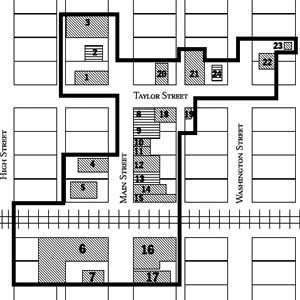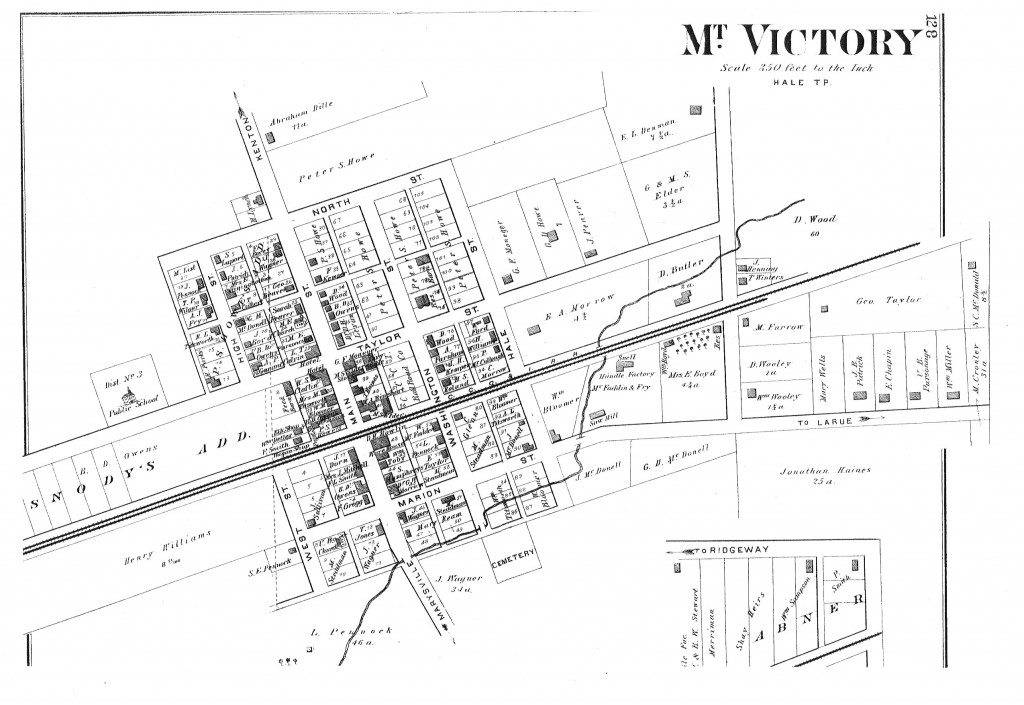Listed on the National Register of Historic Places on April 19, 2001, the Mount Victory Historic District includes the main business block, Methodist Church and Park Place. The village’s significance met the qualifications within 5 of the National Trust’s categories: ARCHITECTURE, AGRICULTURE, COMMERCE, INDUSTRY, TRANSPORTATION.
The official ‘Listing Criteria’ is as follows: This property is listed in the National Register under Criterion A for its association with events that have made a significant contribution to the broad patterns of our history. This property is also listed in the National Register under Criterion C for its distinctive characteristics of a type, period, or method of construction, because it represents the work of a master, possesses high artistic values, or because it represents a significant and distinguishable entity whose components may lack individual distinction (e.g. a historic district).
National Register’s Statement of Significance:
The Mount Victory Historic District is significant under Criteria A and C. Under Criterion A, the district is important for its role in the history of this small northwest Ohio farming and railroad community. The district contains buildings that illustrate the development of the town from the late 19th century to the mid 20th century, reflecting themes of agriculture, commerce, transportation, and community in Mount Victory during this period. Under Criterion C, the district illustrates architectural development in a rural community over the same period of time. The vernacular character of most of the district’s buildings, with simple parapet facades, reflects a small-town environment that lacks the trappings of a larger city. The railroad line which engendered the town remains a significant presence, along with the mill and grain elevator that grew up beside it. A small-scale commercial district, with no building taller than two stories, grew up perpendicular to the rail line. The building which served as a town hall, with council room, jail cell and fire house, is an unpretentious building of simple character. Two buildings in the district stand out as examples of a more high-style design, however. These are “Park Place,” built c. 1872 in an Italianate design for a local merchant and used in the early 1900s as a hotel, and the Methodist Episcopal Church, built in 1903 in a Romanesque Revival style.


